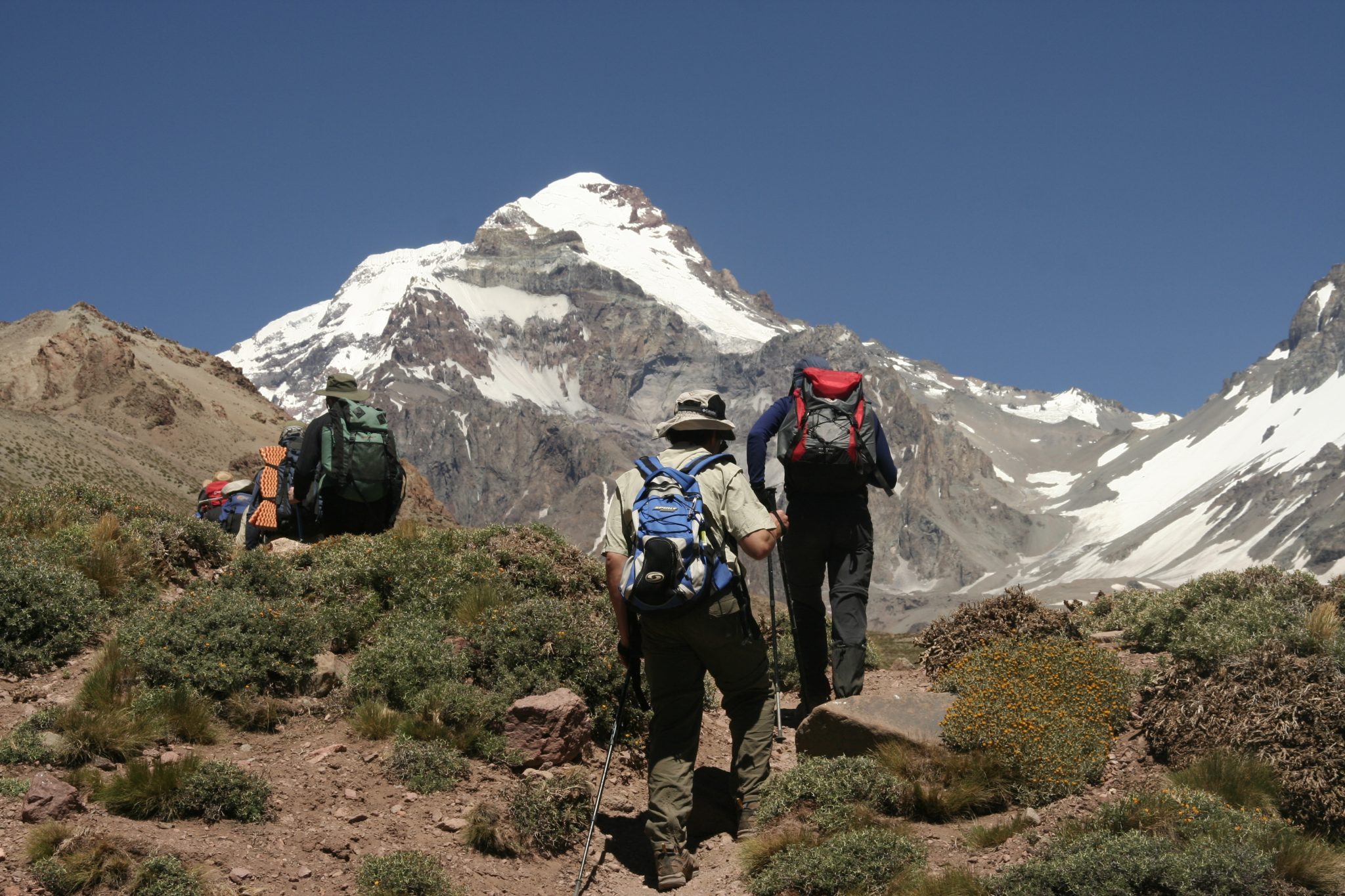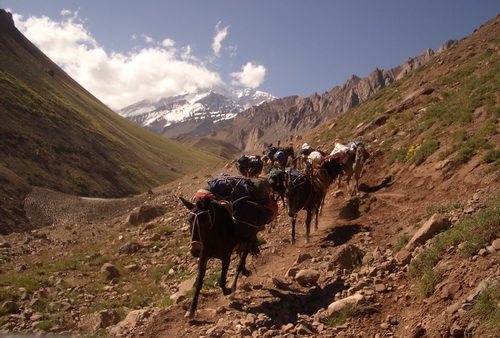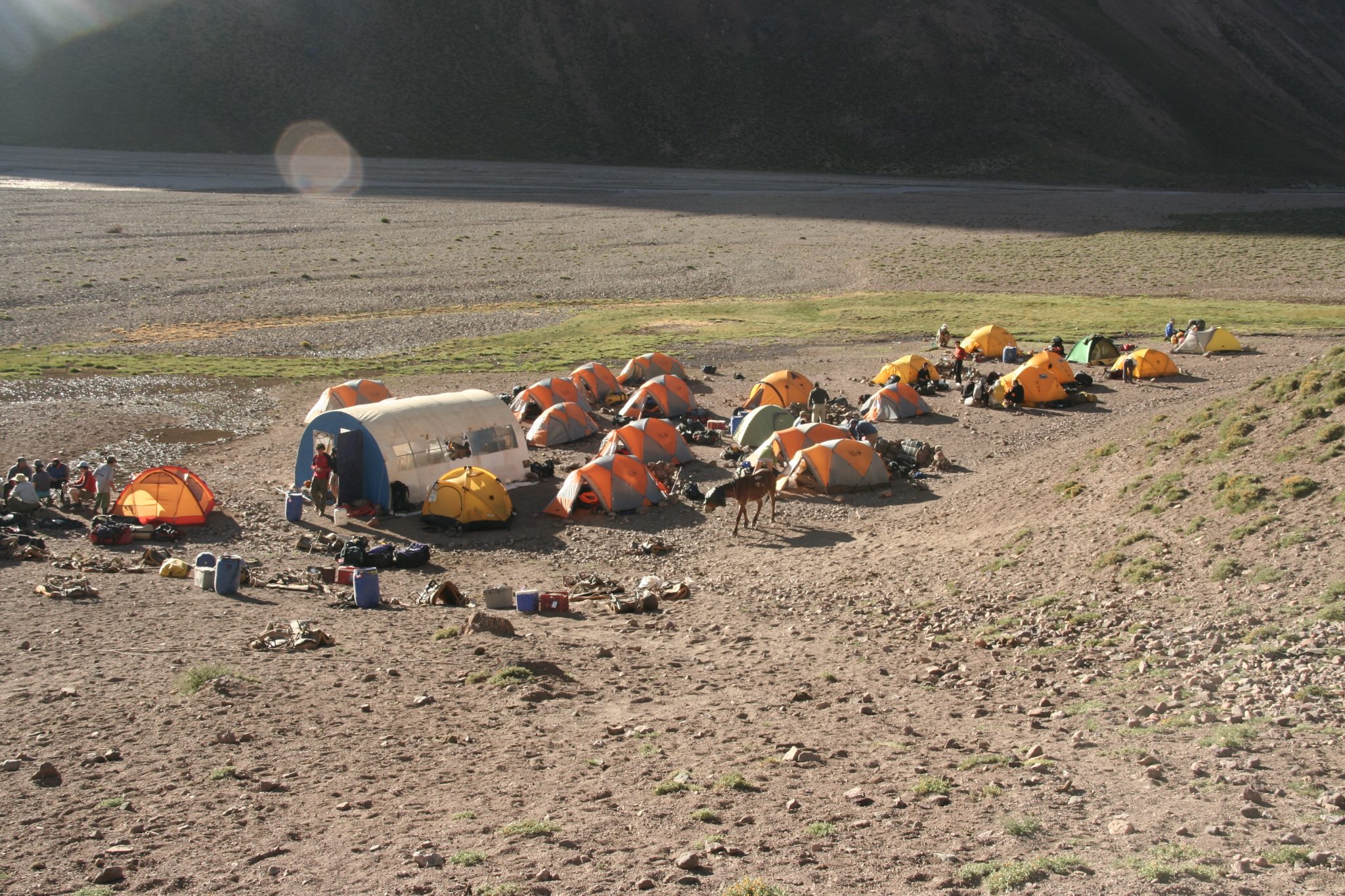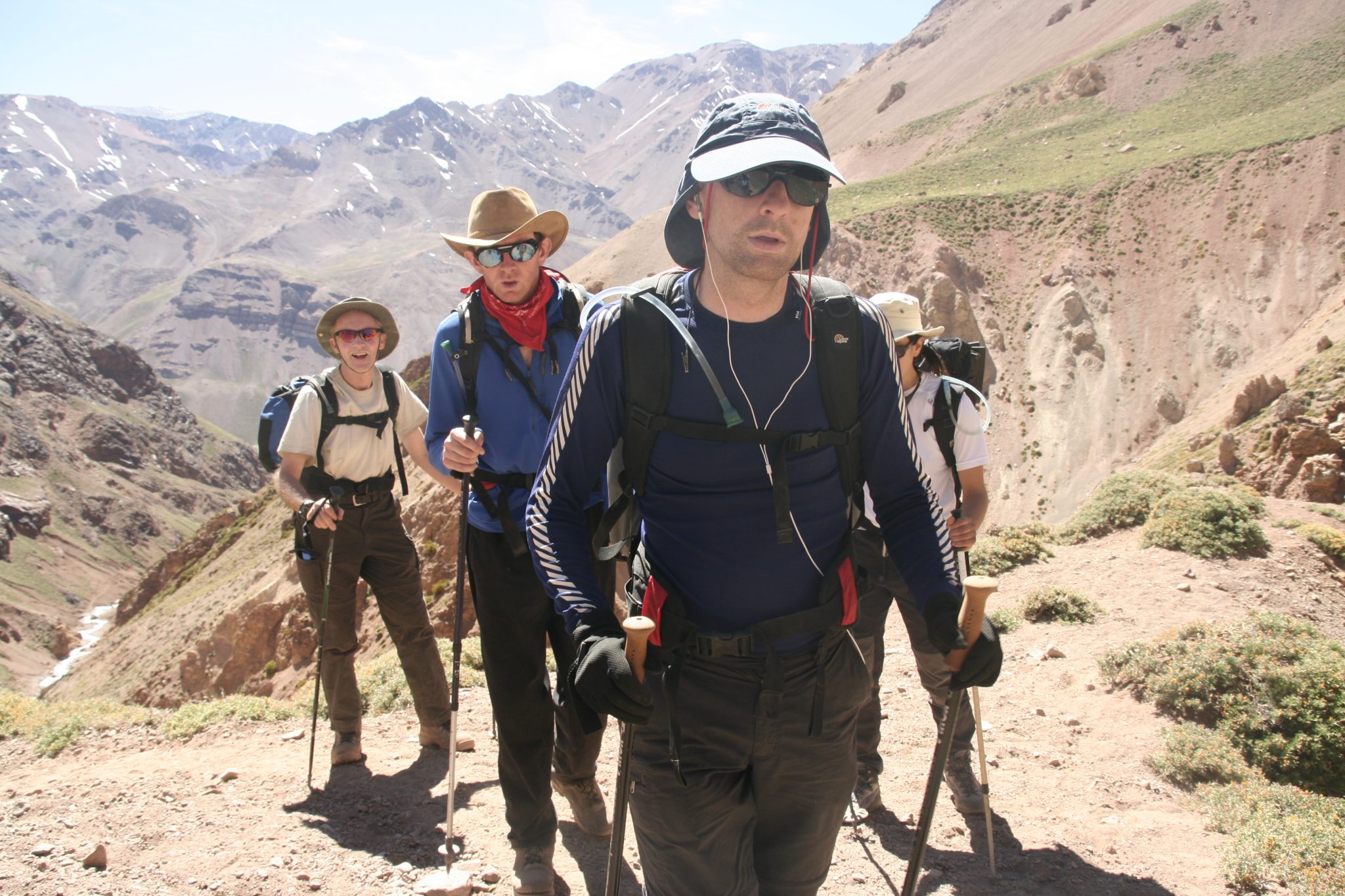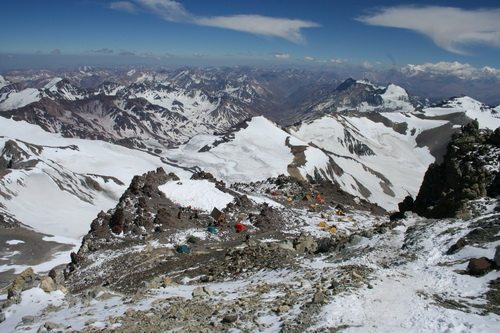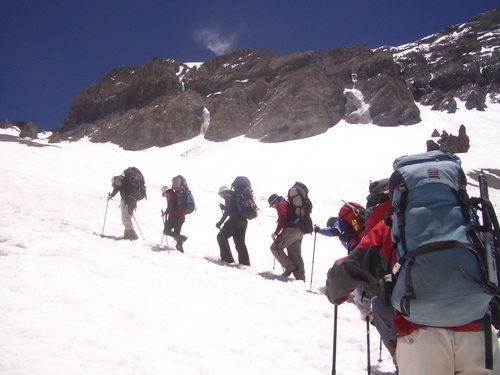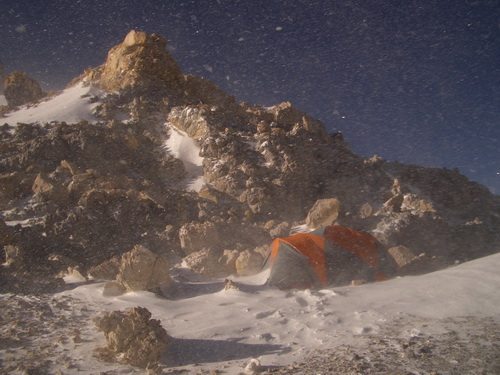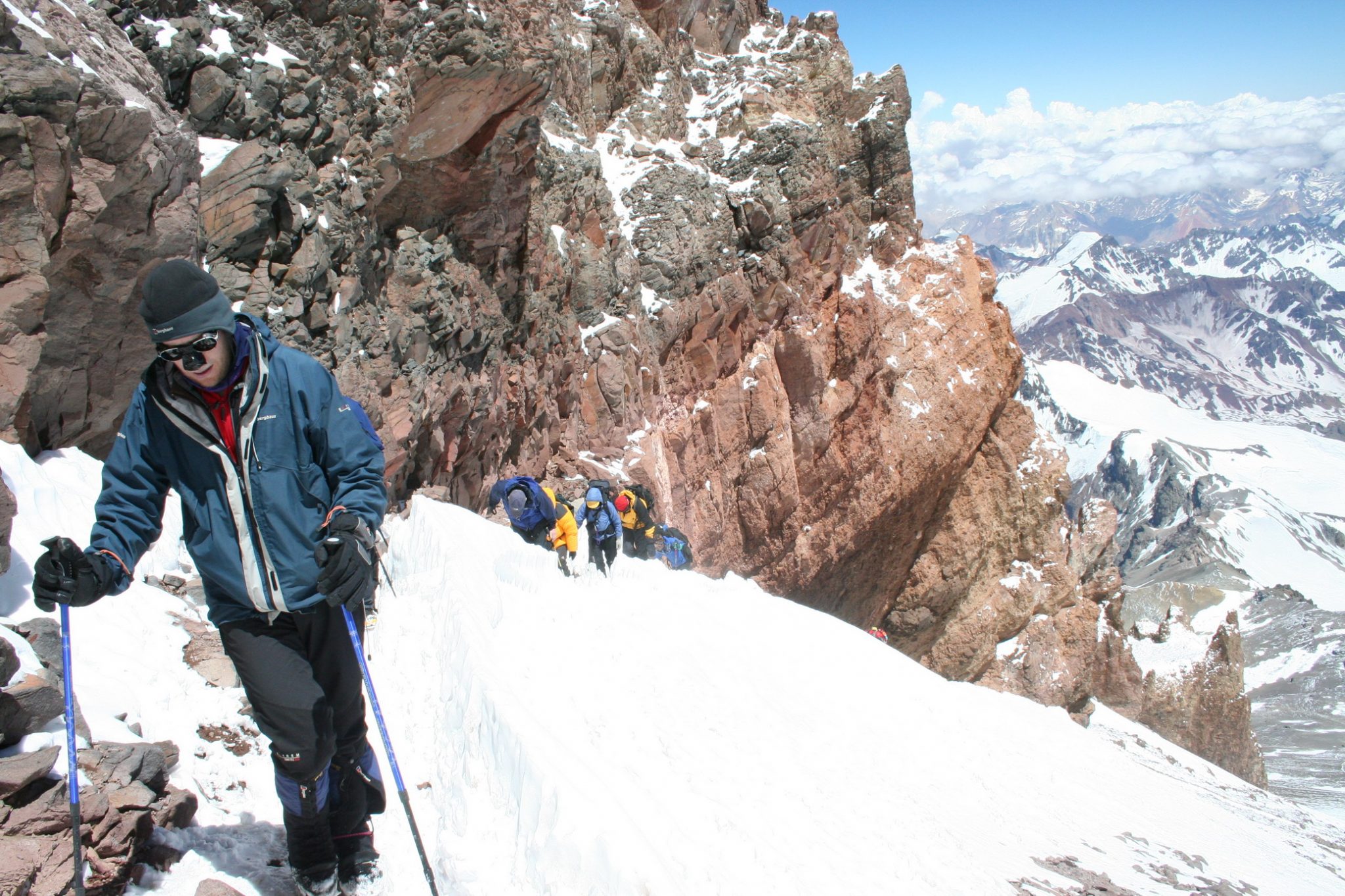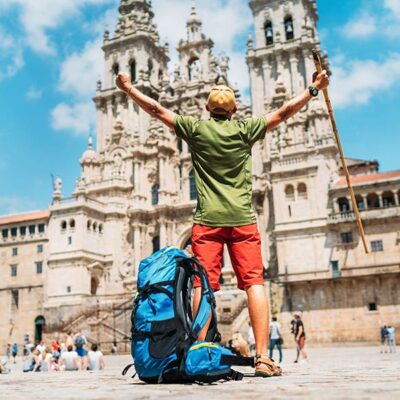Aconcagua
Aconcagua
Location: Argentina
Altitude: 6,962m
Grade: Strenuous, basic expedition and glacier skills required
Fitness level: Good
Route: Polish Route
Travel period: December to February
Duration: 22 days
Pat Falvey Irish and Worldwide Adventures limited is bonded and fully licenced by the Irish Commission for Aviation Regulation, TA0791.
At 6,959m, Mount Aconcagua in Argentina is the highest mountain in the Americas and is a continental high point for those undertaking the Seven Summits challenge. The mountain, located 180km west of the city of Mendoza, is part of the Andes Mountains range and is located in Aconcagua Provincial Park, one of the most spectacular protected areas of Argentina. Aconcagua is technically an easy mountain to climb if approached from the north via the Normal Route. It is arguably the highest non-technical mountain in the world when climbed via this route, although the effects of altitude, coupled with the cold weather, are just as dangerous as that found on similar heights in other mountain ranges.
The Polish Route blends high altitude with technical climbing and is often the choice of experienced climbers who prefer to avoid the crowds on the Normal Route. Two routes can be taken here - the Polish Traverse Route or the Direct Polish Glacier Route. The Polish Traverse Route does not require rope skills as the way crosses the base of the glacier. Ice axe and crampons might be needed in parts. Which route is most suitable for a climber depends on their experience, taking into account the technical level and risks involved. Both routes start at Plaza Argentina following on to Camp 1 and Camp 2.
We do a variation of the Polish Glacier called the False Polish Glacier, where we leave the route before the technical climbing starts. We cross the Vacas Valley and, after three days, we arrive at Plaza Argentina. After a period of acclimatisation, we continue to Camp 1 and Camp 2. From here, we traverse the Northwest Face. At the Berlín level, we join the Normal Route and continue to Filo del Guanaco en route to the summit.
This trek is suitable for those moving on from high-altitude trekking peaks to big mountains over 6,000m and can be achieved by an experienced intermediate. A good level of fitness and experience on mountains is recommended before departure. We put a strong emphasis on proper acclimatisation throughout the expedition. In the early days, we encourage a slow pace in order to enhance your chance of reaching the summit. Our expert logistical support and experienced guides all help to increase your chances of a successful summit on Aconcagua.





